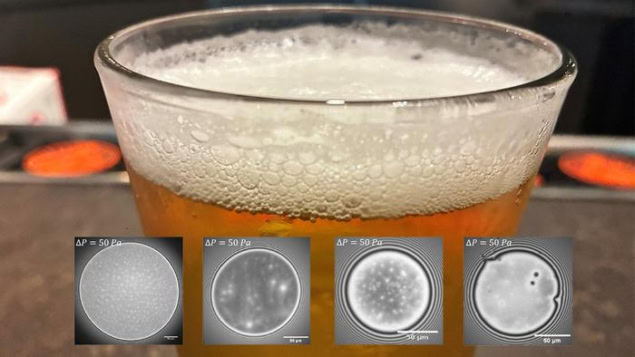
It’s well documented that a frothy head on a beverage can stop the liquid from sloshing around and onto the floor – it’s one reason why when walking around with coffee, it swills around more than beer, for example.
When it comes to beer, a clear sign of a good brew is a big head of foam at the top of a poured glass.
Beer foam is made of many small bubbles of air, separated from each other by thin films of liquid. These thin films must remain stable, or the bubbles will pop, and the foam will collapse.
What holds these thin films together is not completely understood and is likely conglomerates of proteins, surface viscosity or the presence of surfactants – molecules that reduce surface tension and are found in soaps and detergents.
To find out more, researchers from ETH Zurich and Eindhoven University of Technology (EUT) investigated beer-foam stability for different types of beers at varying stages of the fermentation process.
They found that for single-fermentation beers, the foams are mostly held together with the surface viscosity of the beer. This is influenced by proteins in the beer – the more they contain the more viscous the film and more stable the foam will be. The physics of opening swing-top bottles revealed
“We can directly visualize what’s happening when two bubbles come into close proximity,” notes EUT material scientist Emmanouil Chatzigiannakis. “We can directly see the bubble’s protein aggregates, their interface, and their structure.”
When it comes to double-fermented beers, however, the proteins in the beer are altered slightly by yeast cells and come together to form a two-dimensional membrane that keeps foam intact longer.
The head was found to be even more stable for triple-fermented beers, which include Belgium Trappist beers. The proteins change further and behave like a surfactant that stabilizes the bubbles.
The team says that the finding of how the fermentation process alters the stability of bubbles could be used to produce more efficient ways of creating foams – or identify ways to control the amount of froth so that everyone can pour a perfect glass of beer every time. Cheers!



